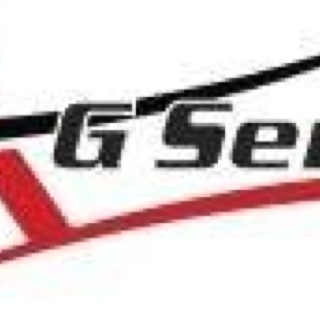Title Page
-
Site conducted
-
Conducted on
-
Prepared by
Untitled Page
1.0 Training Program (Safety / Training Department)
-
Does the site perform training of employees in the proper use of respirators, including putting on and removing them, any limitations on their use, and their maintenance? 1910.134(k)
-
Does the site train employees in the respiratory hazards to which they are potentially exposed during routine and emergency situations? 1910.134(c)(1)(vii)
-
Are employees trained on the schedule for changing out respirator filters or canisters?
-
Are employees trained on how to properly clean their respirators?
2.0 Respiratory Protection Program (Safety/Medical)
-
Does the site have a respiratory control program? 1910.134(a)(2)
-
Does the program contain Procedures for selecting respirators for use in the workplace? 1910.134(c)(1)(i)
-
Does the program contain procedure for Medical evaluations of employees required to use respirators? 1910.134(c)(1)(ii)
-
Does the program contain Fit testing procedures for tight-fitting respirators? 1910.134(c)(1)(iii)
-
Does the program contain Procedures for proper use of respirators in routine and reasonably foreseeable emergency situation? 1910.134(c)(1)(iv)
-
Does the program contain Procedures and schedules for cleaning, disinfecting, storing, inspecting, repairing, discarding, and otherwise maintaining respirators? 1910.134(c)(1)(v)
-
Does the program contain procedures to ensure adequate air quality, quantity, and flow of breathing air for atmosphere-supplying respirators? 1910.134(c)(1)(vi)
-
Does the program contain training of employees in the respiratory hazards to which they are potentially exposed during routine and emergency situations?
-
Does the site perform regular evaluations of the effectiveness of the program? 1910.134(c)(1)(ix)
-
Does the site have a voluntary respiratory protection policy? 1910.134(c)(2)
-
Does the program have a designated program administrator who is qualified by appropriate training or experience that is commensurate with the complexity of the program? 1910.134(c)(3)
-
Have workplace hazards been evaluated to determine appropriate respiratory protection? 1910.134(d)
-
If potential conditions exist, is proper respirator protection provided for IDLH conditions? 1910.134(d)(2)(i)(A)<br>A full facepiece pressure demand SCBA certified by NIOSH for a minimum service life of thirty minutes, or<br><br>1910.134(d)(2)(i)(B)<br>A combination full facepiece pressure demand supplied-air respirator (SAR) with auxiliary self-contained air supply.
-
The site requires employees to fill out a medical questionarre that is reviewed by a PLHCP? 1910.134(e)(2)(i)
-
Are employees offered a follow-up medical examination for employes who gives a positive response to any question among questions 1 through 8 in Section 2, part A of appendix C or whose initial medical examination demonstrates the need for a follow-up medical examination. 1910.134(e)(3)(i)
-
Does the program contain procedures for IDLH atmospheres? 1910.134(g)(3)
-
Does the site consult employees on the evaluations of respiratory protection program to identify any problems? 1910.134(l)(2)
-
Are employees fit tested at least annually or if any other condition arises that would require retesting? 1910.134(f)(2) An additional fit test whenever the employee reports, or the employer, PLHCP, supervisor, or program administrator makes visual observations of, changes in the employee's physical condition that could affect respirator fit. Such conditions include, but are not limited to, facial scarring, dental changes, cosmetic surgery, or an obvious change in body weight.
-
Has identified a filter or canister change out schedule based on objective data? This objective data must be located in the respirator program unless the respirators are equipped with an ESLI. 1910.134(d)(3)(iii)(B)(2)
3.0 Respiratory Protection Practices (Visual Inspection)
-
Are respirators and filters being used by employees NIOSH approved? 1910.134(d)(1)(ii)
-
Does the site provide different respirator sizes in order to provide a proper fit to employees? 1910.134(d)(1)(iv)
-
Has the site selected respirators and filtering cartridges that are st or below the Maximum use concentration when measured outside the respirator. 1910.134(d)(3)(i)(B)(1)
-
The site performs either quantitative fit testing for half face respirators? 1910.134(f) 1910.134(f)(1)
-
The site performs Quantitative testing for half face respirators? 1910.134(f)(1)
-
Are respirators being used as designed? 1910.134(g)(1)
-
Are employee properly shaved for correct seal? 1910.134(g)(1)(i)(A)
-
Are respirators stored in an area to protect them from damage, contamination, dust, sunlight, extreme temperatures, excessive moisture, and damaging chemicals, and packed or stored to prevent deformation of the facepiece and exhalation valve? 1910.134(h)(2)(i)
-
Are emergency respirators for emergency situations kept accessible to the work area?<br>1910.134(h)(2)(ii)(B)<br>Stored in compartments or in covers that are clearly marked as containing emergency respirators; and<br>1910.134(h)(2)(ii)(C)<br>Stored in accordance with any applicable manufacturer instructions.
-
Where applicable, are SCBA's above 90% of the manufacturers recommended pressure level? 1910.134(h)(3)(iii)
-
Where applicable, are SCBA's inspected monthly? 1910.134(h)(3)(iii)
-
When respirators are maintained for emergency use do they contain the following; the date the inspection was performed, the name (or signature) of the person who made the inspection, the findings, required remedial action, and a serial number or other means of identifying the inspected respirator; and this information on a tag or label that is attached to the storage compartment for the respirator, is kept with the respirator, or is included in inspection reports stored as paper or electronic files. This information shall be maintained until replaced following a subsequent certification.
-
Where applicable, are defective SCBA's removed from service?
-
Do employees wash their faces and respirator facepieces as necessary? 1910.134(g)(2)(ii)(A)
4.0 Employee Knowledge (Employee Questions)
-
Does the PLHCP performing the medical evaluations or examinations understand the following information; (A) The type and weight of the respirator to be used by the employee;<br>1910.134(e)(5)(i)(B)<br>The duration and frequency of respirator use (including use for rescue and escape);<br>1910.134(e)(5)(i)(C)<br>The expected physical work effort;<br>1910.134(e)(5)(i)(D)<br>Additional protective clothing and equipment to be worn; and<br>1910.134(e)(5)(i)(E)<br>Temperature and humidity extremes that may be encountered.
-
Employees understand how to positive pressure and negative pressure check a respirator? 1910.134(g)(1)(iii)
-
Do employees know when to change out their canisters or filters on respirators? 1910.134(g)(2)
-
Do employees know where to store their respirators when not in use?
-
Do employees/supervisors know what size/model respirator they currently are fit tested with?
5.0 Documentation and Retention (Safety/Medical)
-
Does the site obtain and maintain written recommendation regarding employee's ability to use the respirator from the PLHCP which includes; Any limitations on respirator use related to the medical condition of the employee, or relating to the workplace conditions in which the respirator will be used, including whether or not the employee is medically able to use the respirator;<br><br>1910.134(e)(6)(i)(B)<br>The need, if any, for follow-up medical evaluations; and<br><br>1910.134(e)(6)(i)(C)<br>A statement that the PLHCP has provided the employee with a copy of the PLHCP's written recommendation.
-
Do training records indicate that employees have demonstrated their knowledge of respiratory protection? 1910.134(k)(1)<br>Why the respirator is necessary and how improper fit, usage, or maintenance can compromise the protective effect of the respirator;<br>What the limitations and capabilities of the respirator are;<br>How to use the respirator effectively in emergency situations, including situations in which the respirator malfunctions;<br>How to inspect, put on and remove, use, and check the seals of the respirator;<br>What the procedures are for maintenance and storage of the respirator;<br>How to recognize medical signs and symptoms that may limit or prevent the effective use of respirators
-
Are employees retrained annually? 1910.134(k)(5)
-
Does the site maintain fit test records until the next fit test is administered. 1910.134(m)(2)(ii)
-
Are emergency respirator inspections maintained either on the respirator or in an electronic file? 1910.134(h)(3)(iv)(B)
-
Are training records kept for a period of employment?











